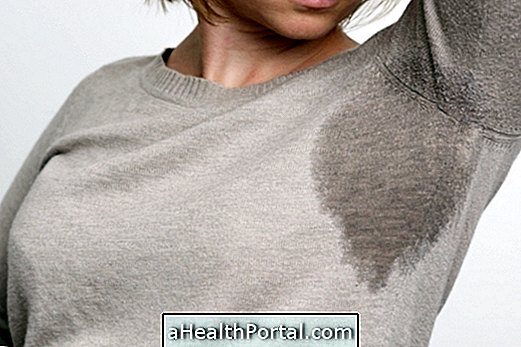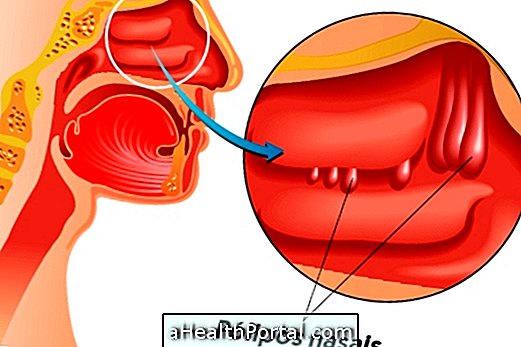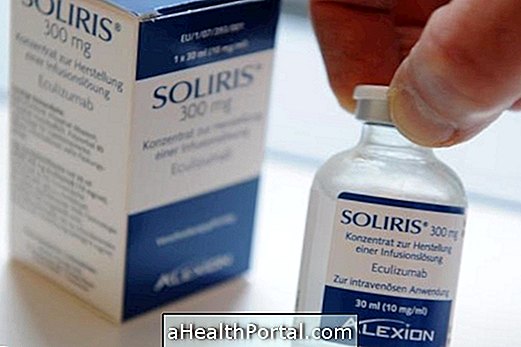Ozone therapy is a process in which ozone gas is administered in the body to treat some health problems. Ozone is a gas composed of 3 oxygen atoms and can be used to treat wounds, diabetes, infections, respiratory and inflammatory problems and cancer.
The treatment should be performed by a health professional, applying the ozone locally or injecting intravenously, intramuscularly or by rectal insufflation.
What is it for and how does it work
Ozone therapy works by interrupting unhealthy processes in the body, such as the growth of pathogenic bacteria if there is an infection, or by preventing some oxidative processes, and can therefore be used to improve various health problems:
1. Respiratory problems

As it promotes entry of greater amounts of oxygen into the blood, ozone therapy is a good option for people with respiratory problems, such as asthma and chronic obstructive pulmonary disease. Learn how to identify and treat asthma.
The entry of greater amounts of oxygen into the blood, causes an increase in the glycolysis rate of the red blood cells, thus increasing the amount of oxygen released into the tissues.
In addition, it significantly increases airway resistance and respiratory rate.
2. Disorders in the immune system

Ozone therapy can bring benefits to people with weakened immune systems and help treat infections as it stimulates and strengthens the immune system because it increases the number of molecules involved in the emission of signals between cells during the triggering of immune responses.
See other ways to boost immunity.
3. Treatment of AIDS

Several studies confirm that ozonotherapy can inactivate HIV, the AIDS virus, due to inactivation of a nuclear protein from the HIV virus. Learn more about symptoms, contagion, and how AIDS treatment is done.
4. Cancer treatment

Some studies also prove that ozone administered at a concentration between 30 and 55 μg / cc causes increased production of interferon, which is a protein produced to, among other mechanisms, interfere with the replication of tumor cells and stimulate the defense activity of other cells.
In addition, it also leads to increased tumor necrosis factor and interleukin-2, which in turn stimulates a cascade of subsequent immunological reactions.
5. Treatment of infections

Ozone therapy also leads to the inactivation of bacteria, viruses, fungi and parasites. In bacteria it acts through a mechanism that disrupts the integrity of the bacterial cell envelope, leading to the oxidation of phospholipids and lipoproteins.
In fungi, ozone inhibits cell growth at certain stages and in viruses it damages the viral capsid and disrupts the reproductive cycle by disrupting contact between the virus and the cell with peroxidation.
6. Complications in diabetes

Complications in diabetes are attributed to oxidative stress in the body and studies show that ozone activates the antioxidant system that affects the blood glucose level. Learn about other ways to treat the various types of diabetes.
7. Wound treatment

Ozone can still be used to treat wounds by applying gas directly to the affected region. In an in vitro study, it was observed that ozone is very effective in reducing the concentrations of Acinetobacter baumannii, Clostridium difficile and Staphylococcus aureus.
Ozone can also be used to treat inflammatory diseases such as arthritis, rheumatism, macular degeneration, disc herniation, circulatory problems, severe acute respiratory syndrome, hypoxic and ischemic symptoms and to lower blood cholesterol.
In addition it has also been used in dentistry in the treatment of dental caries. Learn how to identify and treat a dental caries.
How is the treatment done?
Ozone treatment should be performed by a health professional and never by inhalation.
There are several ways to perform ozonotherapy by applying the gas directly to the skin if you want to treat a wound, intravenously or intramuscularly. To administer ozone through the vein to treat other health problems, a certain amount of blood is drawn that is mixed with the ozone and then re-administered to the person via intravenous. It may also be given intramuscularly, where the ozone may be mixed with the person's own blood or with sterile water.
In addition, other techniques, such as intradiscal, paravertebral or rectal insufflation, are also used, in which a mixture of ozone and oxygen is introduced through a catheter into the colon.
Possible side effects
The fact that the ozone is slightly unstable renders it somewhat unpredictable and can damage the red blood cells and therefore the amount used in the treatment must be accurate.























